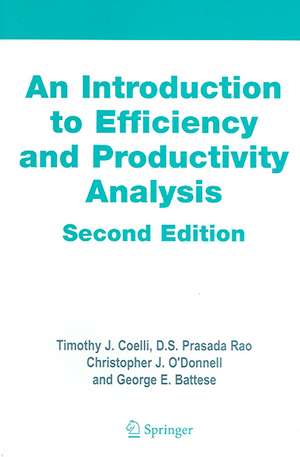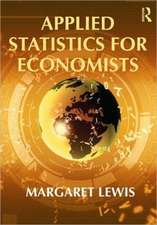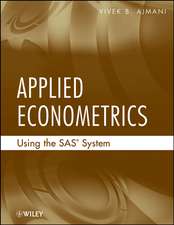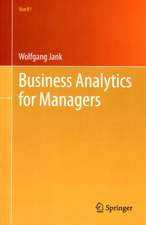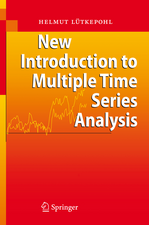An Introduction to Efficiency and Productivity Analysis
Autor Timothy J. Coelli, Dodla Sai Prasada Rao, Christopher J. O'Donnell, George Edward Batteseen Limba Engleză Paperback – 25 aug 2005
| Toate formatele și edițiile | Preț | Express |
|---|---|---|
| Paperback (1) | 700.29 lei 43-57 zile | |
| Springer Us – 25 aug 2005 | 700.29 lei 43-57 zile | |
| Hardback (1) | 899.69 lei 43-57 zile | |
| Springer Us – 22 iul 2005 | 899.69 lei 43-57 zile |
Preț: 700.29 lei
Preț vechi: 823.86 lei
-15% Nou
Puncte Express: 1050
Preț estimativ în valută:
133.100€ • 140.28$ • 110.88£
133.100€ • 140.28$ • 110.88£
Carte tipărită la comandă
Livrare economică 07-21 aprilie
Preluare comenzi: 021 569.72.76
Specificații
ISBN-13: 9780387242668
ISBN-10: 038724266X
Pagini: 368
Ilustrații: XVII, 349 p.
Dimensiuni: 155 x 235 x 19 mm
Greutate: 0.51 kg
Ediția:2nd ed. 2005
Editura: Springer Us
Colecția Springer
Locul publicării:New York, NY, United States
ISBN-10: 038724266X
Pagini: 368
Ilustrații: XVII, 349 p.
Dimensiuni: 155 x 235 x 19 mm
Greutate: 0.51 kg
Ediția:2nd ed. 2005
Editura: Springer Us
Colecția Springer
Locul publicării:New York, NY, United States
Public țintă
ResearchCuprins
Review of Production Economics.- Productivity and Efficiency Measurement Concepts.- Index Numbers and Productivity Measurement.- Data and Measurement Issues.- Data Envelopment Analysis.- Additional Topics on Data Envelopment Analysis.- Econometric Estimation of Production Technologies.- Stochastic Frontier Analysis.- Additional Topics on Stochastic Frontier Analysis.- The Calculation and Decomposition of Productivity Change Using Frontier Methods.- Conclusions.
Recenzii
From the reviews of the second edition:
"The authors introduce the four major methods economists use to analyze efficiency and productivity: econometric estimation of average response, index numbers, data envelopment analysis (DEA), and stochastic frontier analysis. They intend the book primarily as a text for students in economics and also for students in other disciplines, such as business administration. … On the whole, I rate the book as excellent … ." (Jamshed A. Modi, Interfaces, Vol. 37 (2), 2007)
"The authors introduce the four major methods economists use to analyze efficiency and productivity: econometric estimation of average response, index numbers, data envelopment analysis (DEA), and stochastic frontier analysis. They intend the book primarily as a text for students in economics and also for students in other disciplines, such as business administration. … On the whole, I rate the book as excellent … ." (Jamshed A. Modi, Interfaces, Vol. 37 (2), 2007)
Caracteristici
This is the only book that provides a comprehensive and unified introduction to the main techniques used in this field: index number methods, data envelopment analysis (DEA) and econometric techniques, including stochastic frontier analysis (SFA) For each technique the basic methods are carefully described with the aid of numerous diagrams, simple empirical examples and computer output listings. The more advanced aspects of each technique are then discussed after the basic ideas are covered The DEA section has been updated to cover weights restrictions; super efficiency; bootstrapping; short run cost minimization; and profit maximization The productivity growth section has been updated to cover the issues of shadow prices and scale effects In addition, the parametric methods section has been updated to cover scope economies; confidence intervals; testing and imposing regularity conditions; and Bayesian methods
